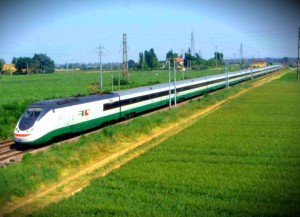Following the release of President Obama’s 2012 federal budget, buzz around high speed rail projects in the US has increased. In the budget, $8 billion is allocated for high speed rail projects in FY 2012 and $53 billion is allocated over the next six years. Vice President Biden, a self-proclaimed train lover and regular rider, stated recently “We know that public infrastructure investment increases private-sector productivity, promotes growth, and creates jobs.”
Nevertheless, debate on up-front costs, accessibility and ridership continues to haunt the high-speed rail future in the US, even though Ray LaHood, the current Secretary of Transportation, believes that no realistic alternative currently exists that makes more sense stating “…there is no amount of money that could build enough capacity on our highways and at airports to keep up with our expected population growth in coming decades. America’s population will grow by 70 million in the next 25 years and 100 million in the next 40 years. Adding capacity to an interstate highway in the congested Northeast would cost more than $40 million per mile and cause enormous traffic backups, assuming we even had the space. A relatively “inexpensive” airport runway can cost half a billion dollars to construct.” From LaHood’s quote alone, it’s clear an alternative to the existing train, car and airplane must take tangible shape, and soon.
High-speed rail is already regularly and heavily used in other parts of the world – France’s TGV, Japan’s Shinkansen and Shanghai’s Maglev Train to name a few of the successful lines. SNCF, the company that operates the TGV in France, has in fact proposed its services to the US a number of times with little to no movement from the US government. In addition, Talgo, a Spanish-owned rail manufacturer, recently set up business operations in Milwaukee, Wisconsin hiring more than 100 American workers with anticipated growth, however, when Governor Scott Walker closed the door on Wisconsin’s high-speed rail segment, Talgo ended its operations in that region and moved out. Amtrak’s Acela, which runs along the bustling Northeast corridor between Washington, DC and Boston, has demonstrated great success and high ridership, yet cannot match the high-speeds of TGV or Shinkansen, for example, due to federal speed regulation and existing landscape challenges. Nevertheless, high-speed rail segments are currently in plan and construction in Illinois and California with the aim of more to come.
That said, President Obama’s 2012 budget highlights the need to move high-speed rail to the front and center of the economic agenda. High-speed rail creates long-term domestic jobs, decreases carbon emissions through an efficient method of mass transportation and connects US business centers and cities in a much more streamlined, accessible – and rapid – way than what currently exists. As Ray LaHood said, “President Obama is launching a high-speed rail network that will serve 80% of Americans and its legacy will be more than trains, tracks, and ties. It will be an economy on the move and a future that we are prepared to win.”

